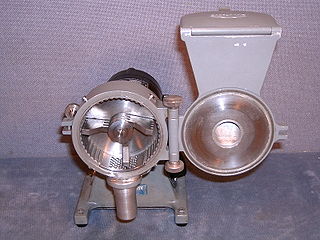
John Stuart Mill, usually cited as J. S. Mill, was a British philosopher, political economist, and civil servant. One of the most influential thinkers in the history of classical liberalism, he contributed widely to social theory, political theory, and political economy. Dubbed "the most influential English-speaking philosopher of the nineteenth century", Mill's conception of liberty justified the freedom of the individual in opposition to unlimited state and social control.

Mill Hill is a suburb in the London Borough of Barnet, England. It is situated around 9 miles (14 km) northwest of Charing Cross. Mill Hill was in the historic county of Middlesex until 1965, when it became part of Greater London.

Heather Anne Mills is a British media personality, businesswoman, and activist.

Mills College is a private liberal arts and sciences college in Oakland, California. Mills was founded as the Young Ladies Seminary in 1852 in Benicia, California. The school was relocated to Oakland, California, in 1871, and became the first women's college west of the Rockies. Currently, Mills is an undergraduate women's college with graduate programs for students of all genders. In 2014, Mills became the first single-sex college in the U.S. to adopt an admission policy explicitly welcoming transgender students.

James Francis McHugh was an American composer. One of the most prolific songwriters from the 1920s to the 1950s, he is credited with over 500 songs. His songs were recorded by many artists, including Chet Baker, June Christy, Bing Crosby, Deanna Durbin, Ella Fitzgerald, Judy Garland, Adelaide Hall, Billie Holiday, Bill Kenny, Peggy Lee, Carmen Miranda, Nina Simone, and Dinah Washington.

In physics, Faddeev–Popov ghosts are extraneous fields which are introduced into gauge quantum field theories to maintain the consistency of the path integral formulation. They are named after Ludvig Faddeev and Victor Popov.

Yang–Mills theory is a gauge theory based on the SU(N) group, or more generally any compact, reductive Lie algebra. Yang–Mills theory seeks to describe the behavior of elementary particles using these non-abelian Lie groups and is at the core of the unification of the electromagnetic force and weak forces as well as quantum chromodynamics, the theory of the strong force. Thus it forms the basis of our understanding of the Standard Model of particle physics.

William Mervin Mills, also known as Tamakoce Te'Hila, is an Oglala Lakota former track and field athlete who won a gold medal in the 10,000 meter run (6.2 mi) at the 1964 Tokyo Olympics. His 1964 victory is considered one of the greatest Olympic upsets because he was a virtual unknown going into the event. He was the first non-European to win the Olympic event and remains the only winner from the Americas. A United States Marine, Billy Mills is a member of the Oglala Sioux Tribe.

A mill is a device that breaks solid materials into smaller pieces by grinding, crushing, or cutting. Such comminution is an important unit operation in many processes. There are many different types of mills and many types of materials processed in them. Historically mills were powered by hand, working animal, wind (windmill) or water (watermill). Today they are usually powered by electricity.
The London Borough of Barnet, located on the northern periphery of London and having much of the area within its boundaries in the Metropolitan Green Belt, has a large number of parks and open spaces. In addition there are large areas taken over by cemeteries and golf courses, and part of Hampstead Heath.

Charing Windmill is a Grade II listed house converted smock mill on Charing Hill in Kent in southeast England. It is sometimes known as Field Mill, but that name was also used by a watermill in Charing.

Camp Albert L. Mills was a military installation on Long Island, New York. It was located about ten miles from the eastern boundary of New York City on the Hempstead Plains within what is now the village of Garden City. It was named in honor of Major General Albert L. Mills, who was awarded the Medal of Honor for gallantry during the Spanish–American War.

Mill Woods Park or Mill Woods Sport Park is a large multi-recreational park located in the centre of Mill Woods, Edmonton, just to the west of Mill Woods Town Centre. It serves as the school fields for both Holy Trinity and J Percy Page High Schools.

De Vlijt or Molen 't Op is a post mill in Koudum, Friesland, Netherlands which was built in 1986 and is working in working order. The mill is listed as a Rijksmonument, number 34081.

De Weyert is a smock mill in Makkinga, Friesland, Netherlands which was built in 1925 and is in working order. The mill is listed as a Rijksmonument, number 31725.

De Gooyer is a windmill in Amsterdam located between Funenkade and Zeeburgerstraat. It is the tallest wooden mill in the Netherlands at 26.6 meters high. It is registered as a National Monument

De Akkermolen is a 17th-century windmill in Zundert, Netherlands. Built around 1605 to replace an earlier windmill, it was used as a gristmill until it was severely damaged in 1950. The mill was bought by the local government and restored in 1961, and it was listed as a national heritage site in 1974.

















